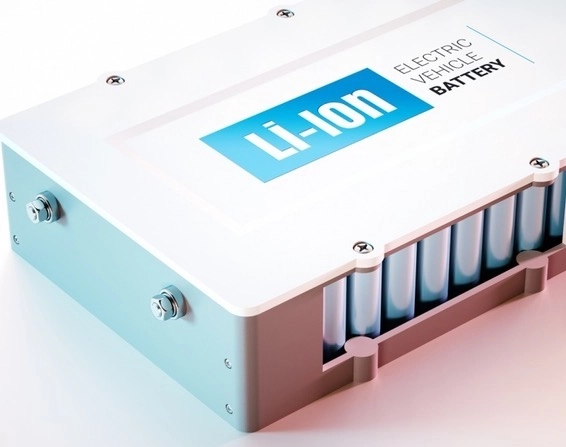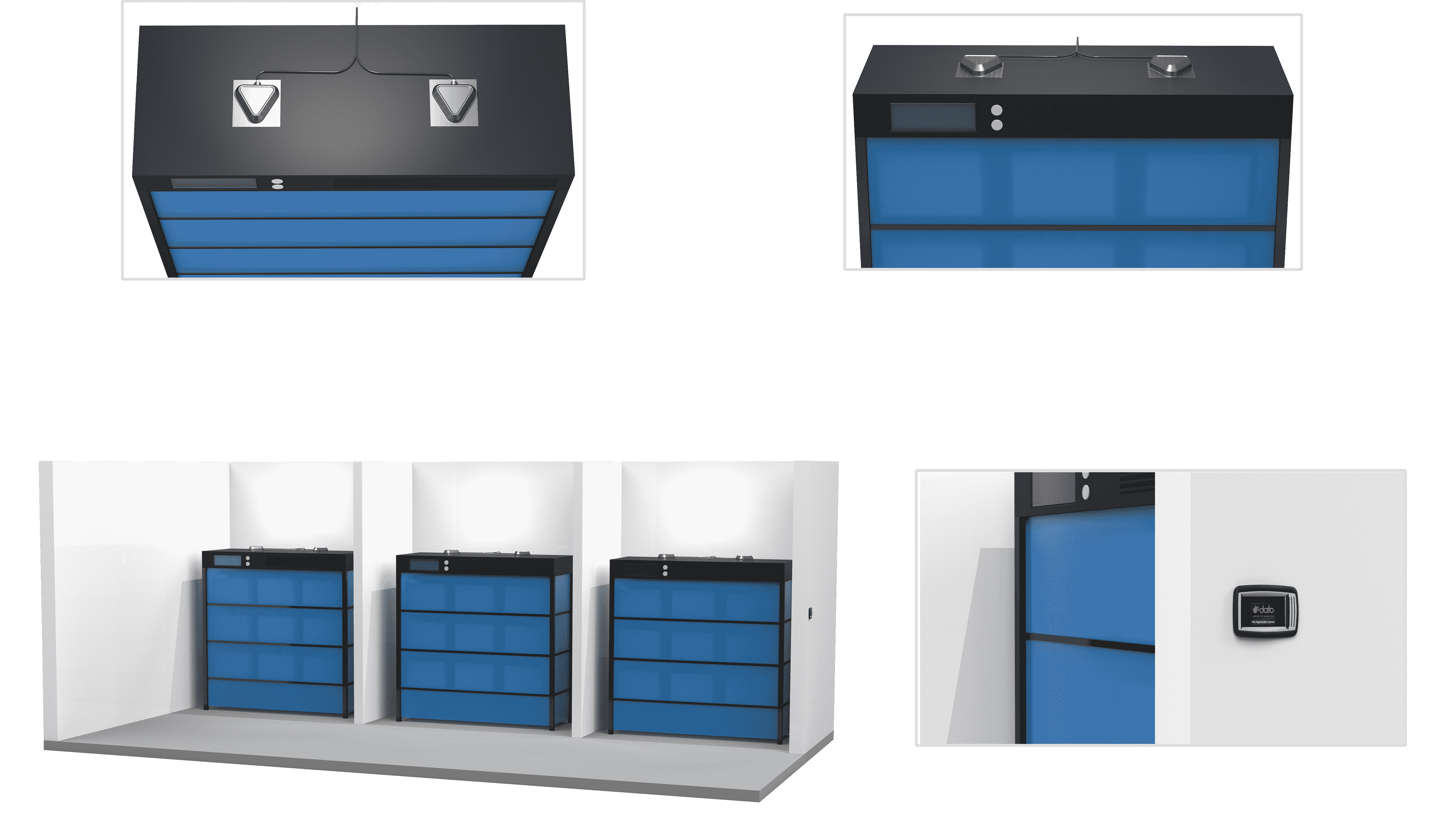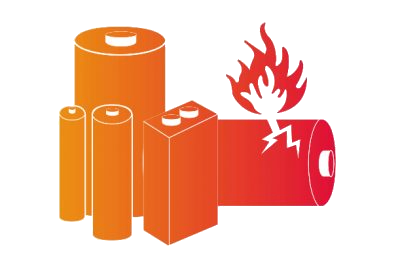Battery fire protection ensures the safe use of industrial power banks and battery energy storage systems (BESS) in a wide range of different environments.
BESS have become much more commonplace as industries around the world transition towards renewable power, not only in hybrid and electric vehicles, but also in industrial and domestic power supply scenarios.
Using battery banks, power supplies can be maintained in the event of a mains shortage and in locations with no mains supply at all, with batteries instead recharged via solar, wind or other renewable source.
During use, high-power battery banks can become hot and, if one or more cells is damaged, may eventually develop faults such as short circuits or chemical leaks.
Because of this, older batteries gradually pose more and more of a fire hazard, and constant monitoring is a crucial precaution to protect against the risk of a catastrophic blaze.

Request A Quote
Thermal Runaway in Battery Fires
Thermal runaway is a particular risk in lithium-ion battery fires. When the internal temperature of the battery rises above a certain point, usually due to the failure of a cell, an exothermic reaction can begin.
Due to the heat released by this reaction, the battery gets even hotter, creating a very steep positive feedback curve.
Thermal runaway occurs when this exponential growth in heat is not tackled fast enough, causing the battery to catch on fire and start self-sustaining combustion.
Once ignited, it’s common for these kinds of battery fires to lead to total loss of the vehicle, as firefighting from outside has little effect to put out the flames until all available fuel is consumed.
What are the Risks of BESS Fires?
A BESS is by definition a store of energy. As battery capacities increase year by year, the amounts of energy stored inside are also increasing, and in an incidence of fire this means there is more destructive potential too.
Batteries also contain corrosive chemicals that can increase the risk of a chemical fire when cells become damaged or leak.
In the worst cases, the materials contained in the battery itself can provide not only the fuel for the fire, but also the oxygen it needs to burn.
This can make battery fires self-sustaining, and renders them almost impossible to extinguish using traditional methods.
Battery fire protection comprises several stages, to monitor batteries and detect the early signs of overheating or damage, to cool hotspots before they can ignite, and to respond as quickly as possible to any signs of flames before fire can take hold of the battery as a whole.


Our Solution: Dafo Li-IonFire
Dafo Li-IonFire is a unique solution developed over many years specifically to tackle fires in lithium-ion powered electric vehicles and HEVs.
Merlin are the exclusive suppliers of Dafo Li-IonFire to the UK & Ireland market, with a base in County Kildare to serve customers across Ireland.
To find out more, contact our team of engineers today and we can help you to decide the best methods of battery fire monitoring and suppression for your specific application.


FAQs
For any further information, please see our list of battery fire protection frequently asked questions in our collapsable menu below:
Why does a lithium-ion (li-ion) battery catch fire so easily?
Under the right circumstances, li-ion batteries are highly susceptible to fire risks.
There are many different ways li-ion battery fires can occur, and they often arise following a malfunction in the battery cells. This malfunction can be as a result of mechanical failure or physical damage to the battery, for example. This causes the temperature of the battery cells to rise rapidly.
Once alight, lithium-ion batteries can enter a state called ‘thermal runaway’, where the fire is extremely difficult to control or suppress. In this state, the fire can become a self-sustained process, as it produces its own oxygen to propel the flames.
How can lithium-ion batteries cause fire?
Lithium-ion battery fires can arise in a number of ways, including:
- Malfunction within the battery cells, caused by mechanical failure or physical damage
- Internal overheating of the battery cells
- Excessive heat from its environment
- Excessive heat from friction or ongoing use in the case of electric vehicles or machinery
What to do if a lithium battery catches fire?
Lithium-ion battery fires can be severe. In the event of a li-ion battery fire, you should call the fire service and notify them that it involves a lithium-ion battery.
Often, if the battery has entered thermal runaway, fire fighters will contain the blaze and leave it to burn itself out over time. This can lead to total equipment loss.
Fire suppression solutions, such as Li-IonFireTM, can help to prevent a battery from entering thermal runaway, protecting surrounding valuable assets and teams.
How do you prevent lithium-ion batteries from catching fire?
Lithium-ion battery fires are extremely challenging to extinguish from outside the battery, as the components within the battery will often act to sustain the fire.
To prevent a lithium battery from catching on fire, you should ensure the battery is in good condition and well maintained, and be cautious not to expose it to physical damage or overcharging.
To protect against the fire risks associated with lithium-ion battery fires, a built-in battery fire protection system, like Li-IonFireTM, can react quickly to a battery failure or significant temperature increase within the battery cells, preventing the battery from catching fire or possibly exploding.
What type of fire extinguisher is needed for lithium-ion batteries?
Lithium-ion cells contain oxygen, so you cannot starve the flames from outside. The primary goal to tackle a lithium-ion fire once it has started is to try to cool down the battery. This can be done with an internal fire extinguisher built into the battery compartment.
Fire Shield Systems’ built-in fire protection system, Li-IonFireTM, monitors the battery for defects such as mechanical failure, overheating and short circuits. When a failure is detected that is likely to lead to a fire or explosion, the Li-IonFireTM system triggers, extinguishing the threat before the battery can catch alight.
Can an uncharged lithium-ion battery explode or burn?
A fully (or almost fully) discharged lithium-ion battery is less likely to explode, as it contains less potential energy. However, the battery itself still comprises flammable materials and it can still catch fire if certain conditions are met.
Explosions are also a risk when charging a ‘dead’ lithium battery, particularly if the battery is left charging after it has reached its full capacity. In this situation, putting excess energy into the cell can cause it to heat up. This can lead to ‘thermal runaway’, where the exothermic energy from the battery itself becomes self-sustaining.
Setting The Standard For Fire Protection Systems: Contact Us Today!
To find out how we can help you get in touch today or call us on +353 45 863 023.

